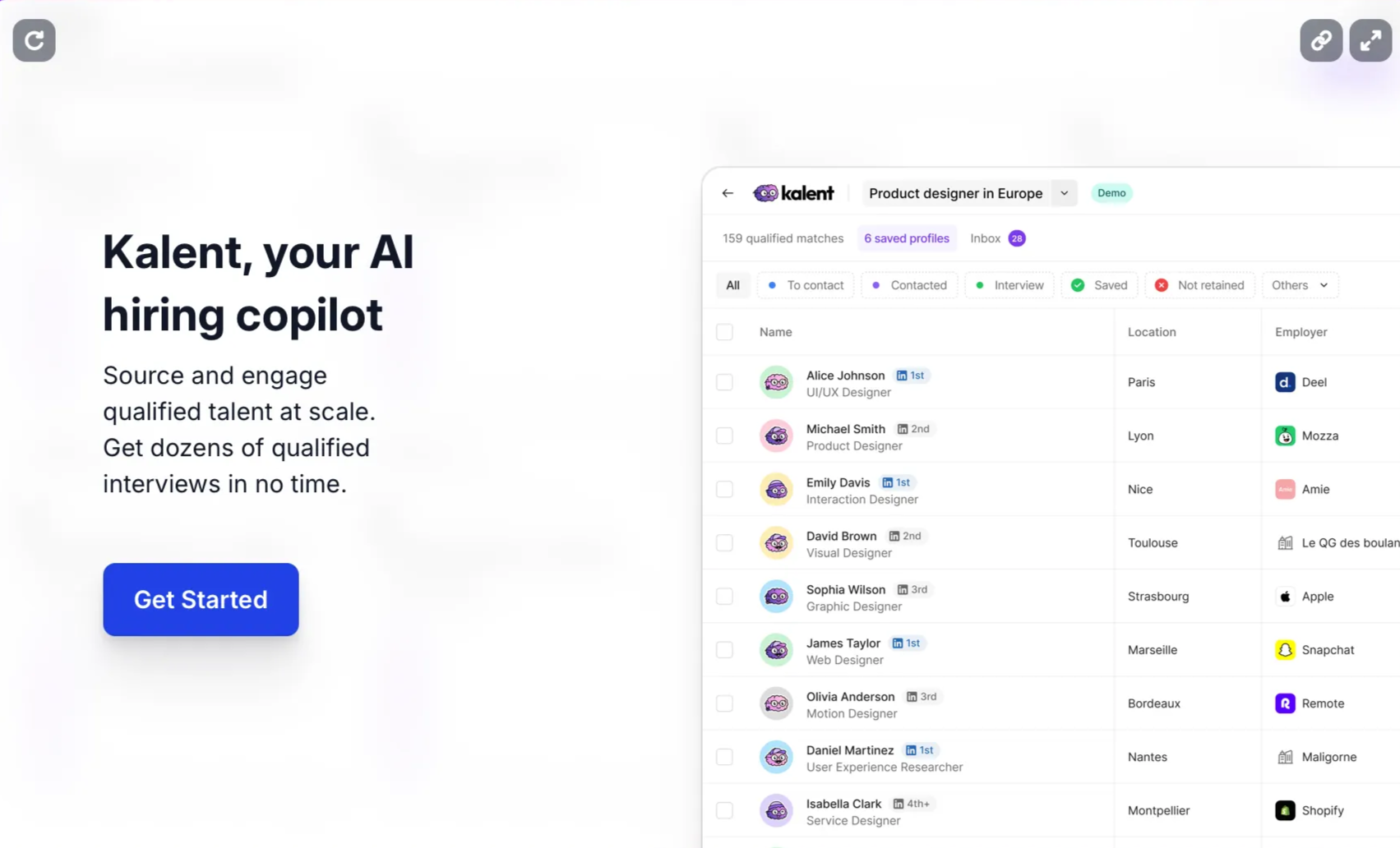What Does a Marketing Director Really Do? (+ How Recruiters Can Use Job Descriptions to Source the Best Talent)
- Defines marketing director job description essentials - Explains strategic, creative, and leadership duties - Details data-driven marketing and ROI tracking - Highlights what good job descriptions include - Shows how Kalent improves sourcing from descriptions - Kalent transforms marketing director job description insights
What Should a Marketing Director Job Description Include?
If you've ever scrolled through a marketing director job description and wondered whether it was one role being advertised, or three, you’re not alone.
The marketing director position is notoriously tricky to pin down because it sits right at the intersection of strategy, operations and content creation. Marketing directors need to be able to shape brand direction, manage budgets and teams and prove ROI on everything they do.
For recruiters, understanding what goes into a marketing director job description matters more than you'd think. So let's dig into what the role actually involves, as well as what makes a good (or bad) job description for a marketing director.
Understanding the Marketing Director Job Description
A marketing director job description should be more than a list of responsibilities. When it's done right, it should reach out to top-performing candidates, tell them everything they need to know about rthe role and give them insight into the company’s goals and mission.
So what exactly is a marketing director? The role usually sits somewhere between the chief marketing officer (CMO) and the team doing the day-to-day marketing work, usually content executives/assistants, writers and marketing managers.
Marketing directors handle strategic planning, budget management and branding. Ultimately, they’re responsible for growing the business through marketing – not just running clever campaigns or making pretty ads, but actually bringing in revenue.
The role demands both analytical skills and creativity. You need someone who can dig into data and metrics while also understanding brand storytelling and tone. You can tell which companies get this when you read their marketing director job descriptions, as they mention both sides of the coin.
Marketing directors also spend a lot of time working with sales, product teams and leadership to keep everyone aligned.
Marketing Director Job Description: Key Roles & Responsibilities
When you're writing a marketing director job description, these are the details you need to include:
Strategic Planning
This part of the marketing director job description is all about setting marketing KPIs in line with broader business goals.
Campaign Management
Marketing directors will need to overseei marketing efforts across multiple channels, such as digital ads, organic content, email, social and more. The right person for the role will know what performs well on each platform and be willing to adjust when something's not working.
Brand Management
It’s also a marketing director’s job to keep everything feeling cohesive. Whether a potential customer sees your website, reads an email or talks to a salesperson, the experience should feel like it's coming from the same company.
Team Leadership
The job also involves managing different types of people, such as designers, writers, performance marketers, freelancers and agency partners. It involves a lot of juggling different personalities and skill sets, so the job description should reflect that.
Budget And ROI Tracking
This is the less glamorous part, but it's also crucial. Marketing directors own the budget and have to make calls about what's worth spending on based on what actually brings in leads and customers, so this responsibility should be outlined.
Data-Driven Decision-Making
This part of the marketing director job description means using analytics to figure out what's working, what's not and where the industry market is heading.
Collaboration With Sales
Marketing directors need to make sure their team isn’t just generating leads that don’t proceed through the sales funnel. Both teams need to agree on what a good lead looks like and work together to convert them.
What Does a Strong Marketing Director Job Description Look Like?
Bad marketing director job descriptions are frustratingly vague. They'll say things like "must be able to improve marketing results" without defining what that means or how success gets measured.
They also leave out crucial details about team size and reporting structure, so candidates are left wondering if they’ll be managing a team of two or twenty, and whether they would have actual authority or just be executing someone else's ideas.
Good job descriptions tell a story. They start with context about why the role matters (something like, "We're growing from $10M to $50M in the next 18 months and need someone who can build the marketing engine to support that). Instead of vague language like "manage campaigns," they get specific: "drive 30% year-over-year revenue growth through smarter customer acquisition." They include real numbers and expectations so candidates can honestly assess whether they're up for it.
Good marketing director job descriptions are also transparent about structure. Who will this person manage? Who do they report to? How much freedom will they have to make decisions? These details matter because nobody wants to walk into a role blind. They also skip the buzzwords and instead list actual competencies – things like experience with specific CRM platforms, the ability to interpret analytics and brand storytelling skills.
The best job descriptions also include information about company culture. Again, not the generic "we work hard and play hard" or “we’re a family,” but something that gives you a sense of what it's actually like to work there and what kind of person the company values.

How Kalent Uses Job Descriptions to Source Better Candidates
Instead of treating a marketing manager job description like something you post and forget about, Kalent's AI actually reads it to understand what the company is really looking for – not just skills listed, but the strategic intent behind them and even the company's communication style.
Our platform picks up on subtle things like the level of seniority expected, specific leadership requirements and particular KPIs mentioned. We use all of this to find better candidate matches than you'd ever get from just keyword searching.
Kalent also helps you build outreach across multiple channels, including email, LinkedIn, WhatsApp and SMS. Messages sound human and relevant because they reference actual context from the job posting and how the candidate meets it. The messages feel are personalized, but at scale so you don’t burn out writing every single one!
Instead of sending a generic, templated message, with Kalent you could reach out with something like: "I noticed you led a rebrand that increased customer retention by 40%, which is exactly the kind of strategic thinking this SaaS company is looking for as they move from Series A to Series B."
This is the kind of detailed, personal message candidates actually respond to, and Kalent handles it all so you don’t have to. All you need to do is oversee the process and add any last-minute human touches to ensure your messaging is relevant and your campaigns run smoothly.

Kalent: From Job Description to Genuine Connection
The marketing director job description is way more than just a list of what someone needs to do in a new role. It's actually a window into what the company is trying to accomplish, how they operate and what success looks like there.
When recruiters figure out how to read between the lines, their outreach stops feeling like spam and starts feeling like genuine connection. This is exactly what Kalent helps with: turning those job posting details into real relationships with candidates. Book a demo today to get started.





